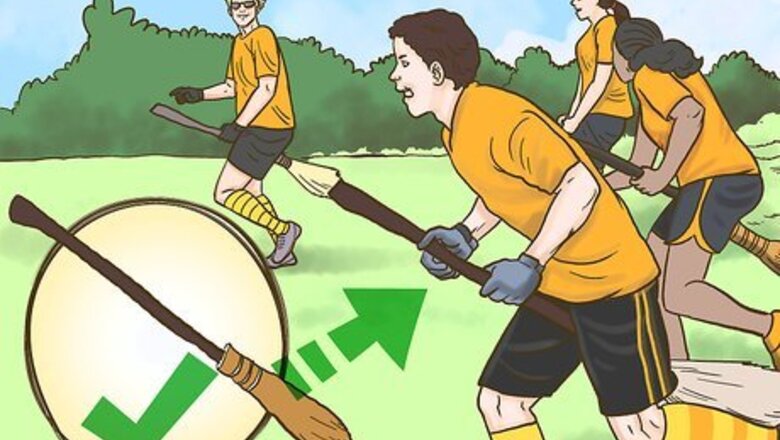
views
- To play, you’ll need a broomstick for each player and four balls: 1 quaffle (a volleyball), 2 bludgers (dodgeballs), and 1 snitch (a tennis ball).
- Players score points by throwing the quaffle through one of their opponent’s hoops, which is worth 10 points, or by capturing the snitch, which is worth 30 points.
- If a player hits an opponent with a bludger, they are out; that player must run and touch one of the hoops before they can return to play.
- There are different positions in Muggle Quidditch—the seeker chases the snitch, keepers defend the hoops, chasers try to score, and beaters use the bludgers to disrupt their opponents.
Learning the Rules
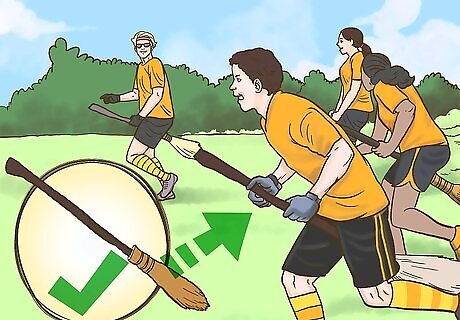
Stay on your broomsticks. In Quidditch, you must hold your broomsticks between your legs at all times with one hand on the broomstick. Every player should have a broomstick they stay on at all times.
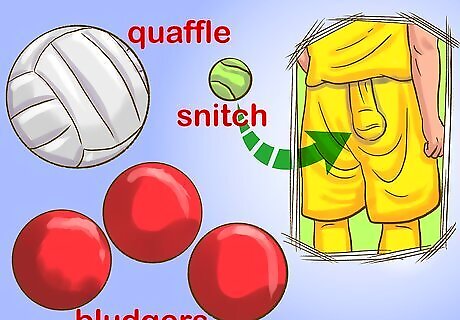
Use four balls. In Quidditch, you need four balls to play. There is one volleyball, known as the quaffle. There are two dodgeballs, known as the bludgers. There is one small ball, such as a tennis ball, that is strapped to one player. This is the snitch.
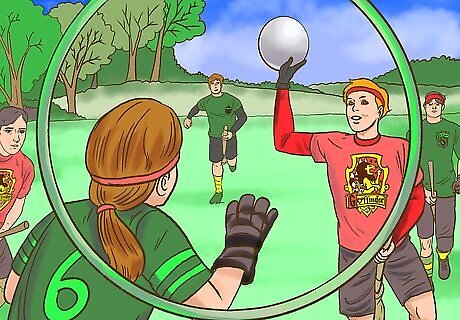
Learn how to score points. Players attempt to get the quaffle (volleyball) through the hoops on the ends of the field. Getting a quaffle through a hoop means 10 points are scored for that team. The only other way to score points is to catch the snitch by grabbing the ball attached to the player carrying it. The team that catches the snitch gets 30 points. The quaffle can be passed between players on the same team.
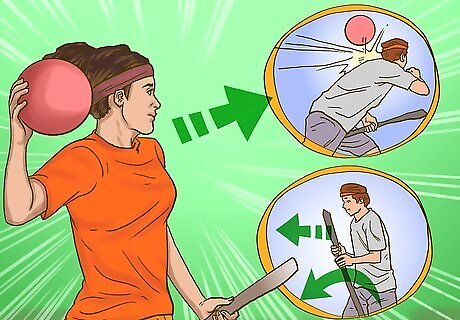
Learn how the bludgers work. Players on opposing teams throw bludgers at one another. If someone is hit by a bludger, they must dismount their broomstick and tag one of the hoops on the end of the field before they can return to the game.
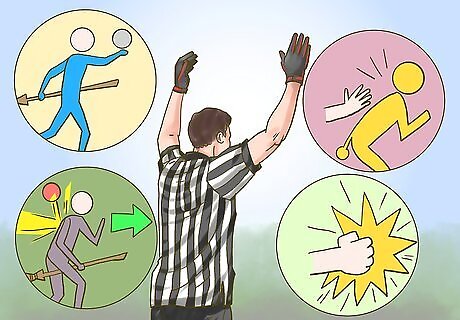
Call penalties as needed. In Quidditch, there is always one ref. If you're the ref, it's important you stay vigilant and call penalties if players are not following the rules. If you call a penalty, it's up to you to decide how long a player should be removed from the game. The following can result in a penalty: Not keeping your broomstick in position (i.e., between your legs with one hand on the stick) is a foul. Failing to dismount a broomstick and tag a hoop after being hit with a bludger is a foul. If any player besides the seeker touches the snitch, this is a foul. Any kind of rough playing, such as shoving or hitting, may result in a foul.
Setting up the Court
Find a big enough space. Quidditch requires a field that's at least 36 yards (33 m) by 66 yards (60 m). Although wizard Quidditch is played over an oval field, muggle quidditch is typically played in a rectangular field. You can play in a local park or see if a local field used for sports matches is opened to the public. Keep in mind, this is the length for a regulation Quidditch match and doesn't have to be followed strictly when just playing for fun. If you don't mind less space, you can play Quidditch in a smaller park or even someone's backyard. Goal posts are placed on a line 18 yards (16 m) from the centerline. The keeper zone starts 12 yards (11 m) from the centerline and reaches to the end of the field.
Get pipes for the goal posts. You need 6 pipes or poles; 2 of each length: 3 feet (0.91 m), 4.5 feet (1.4 m), and 6 feet (1.8 m). You can find these at a local hardware store, craft store or even some toy stores. You may need to use scissors or a knife to cut down pipes that aren't the right lengths. If you want to stick the posts in the ground, either make them about .25 feet (0.076 m) longer or use a piece of rebar as an anchor.
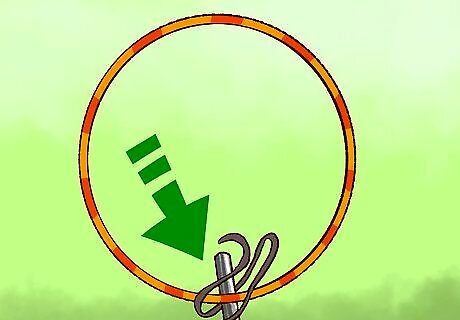
Tie hula hoops to your pipes or sticks. There is no standard size for the hula hoops. Just make sure they're big enough that a volleyball can pass through them. Use string or twine to tie the hula hoops to your pipes or sticks.
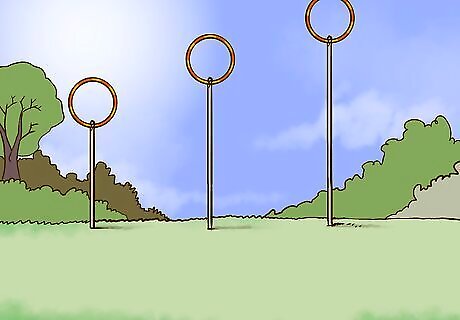
Place the goal posts. The pipes or sticks you just made are your goal posts. There should be three goal posts on either end of the field. Place the 6 feet (1.8 m) goal post in the center, with the 4.5 feet (1.4 m) goal on the right and the 3 feet (0.91 m) goal on the left. Keep spacing between the posts even, about 7.5 feet (2.3 m).
Assigning Roles
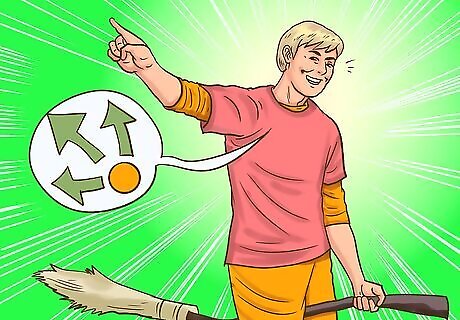
Select a captain. Each team should have a captain who's responsible for deciding which players take on which roles. You can pick a captain based on who's the most levelheaded or you can do something like draw straws. The captain will be able to choose which role in the game (i.e., chaser, beater, etc.) they want to play.
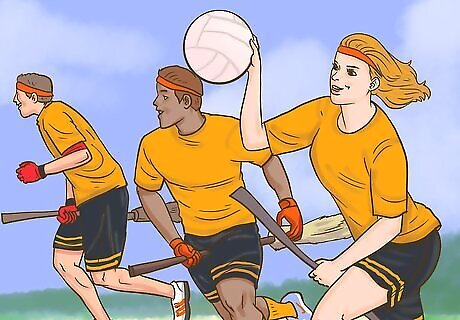
Choose your chasers. Each Quidditch team should have three chasers. Chasers are responsible for throwing or kicking the quaffing (volleyballs) through the hoops at the end of the field.
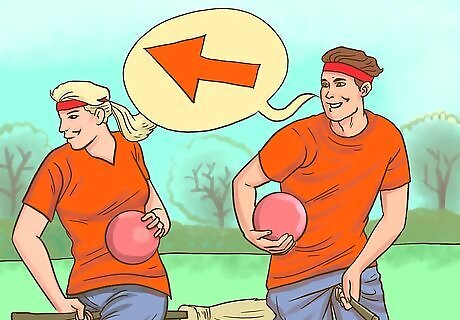
Select your beaters. Each team should have two beaters. Beaters are responsible for throwing the bludgers (dodgeballs) at players on the opposing team. This will temporarily kick players out of the game, giving your team the advantage.
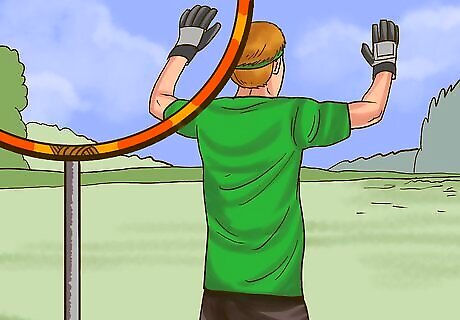
Pick a keeper. Each team needs one keeper. A keeper's job is to guard the hoops at the end of the net and prevent the other team from scoring.
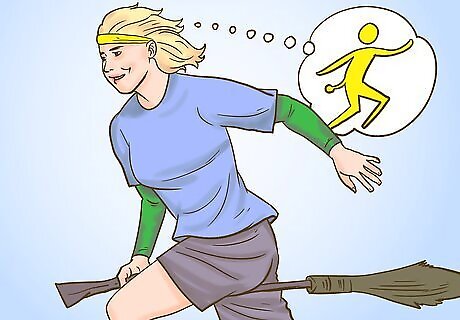
Assign one seeker. The seeker's job is to catch the snitch. Each team should have a single seeker.
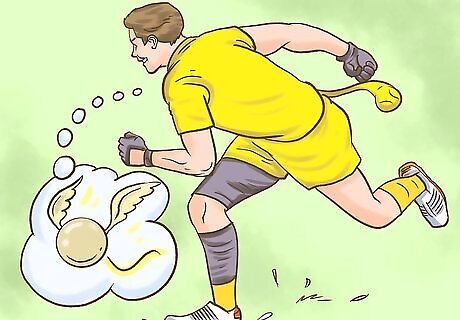
Select a person to carry the snitch. In Quidditch, the game ends when the seeker catches the snitch. The team that catches the snitch is awarded 30 points. In muggle Quidditch, one person wears a waist band with a small ball, such as a baseball, attached to the band. The ball is the snitch and the person who carries it must evade the other team's seekers.
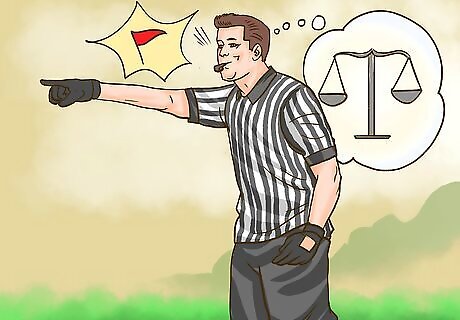
Assign a ref. Find someone to be the referee in the game. The ref's job is to start the game by tossing the quaffle (volleyball) into the air and call out penalties. Pick someone who has good judgment and is usually fair during games and other events.
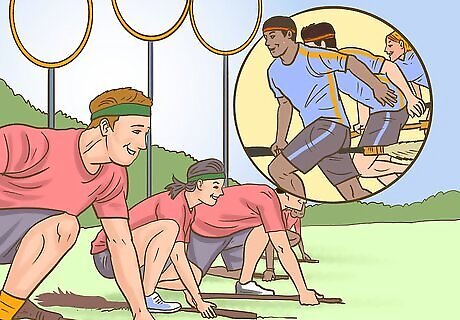
Wear the same color shirts. To tell teams apart, both teams should have a color to wear. One team can wear yellow t-shirts and the other can wear blue t-shirts, for example.
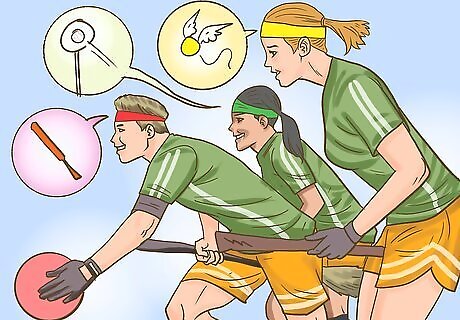
Add different colored accessories to differentiate your roles. Accessories in various colors should be used to differentiate between each player's specific role on any given team. You can opt for things like sweatbands and bandanas. The colors you choose to represent different positions is up to you.
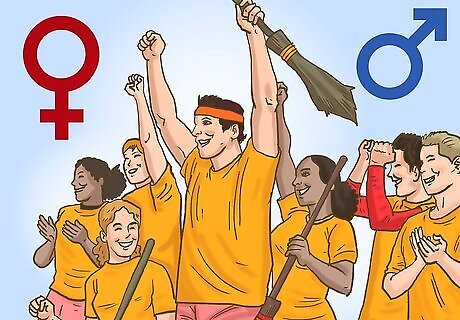
Follow the gender maximum rule if you're playing league Quidditch. If you're making an official Quidditch team, such as one for your school, you have to follow the gender maximum rule. Each team can only have a maximum of four players who identify as the same gender on the field simultaneously. However, once the person carrying the snitch enters the game, that number increases to five. A person's gender is the gender they identify with, which may not necessarily be the gender they were assigned at birth. Quidditch welcomes players of all genders and gender identities.
Playing the Game
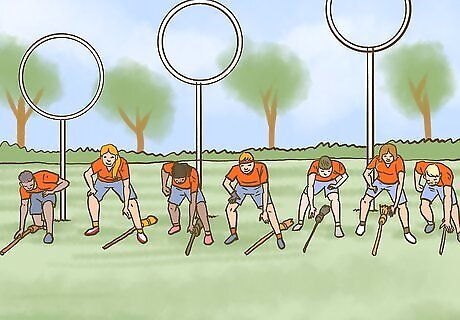
Get in the starting position with your broomsticks. Have opposing teams stand on either side of the field with their broomsticks between their legs. Players will remain still until the ref starts the game.
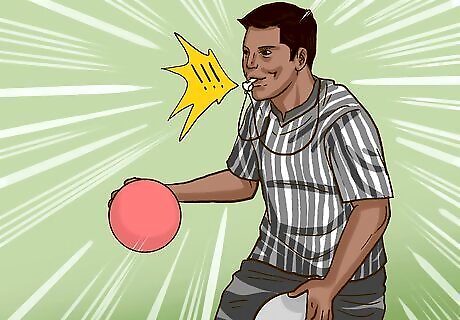
Release the balls to start the game if you're the ref. If you're the ref, start the game by standing near the edge of the field. Release the bludgers (dodgeballs) and quaffle (volleyball) onto the field. Players can then enter the field and begin the game.
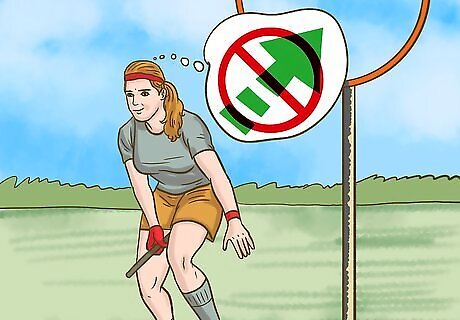
Defend the hoops if you're a keeper. If you're a keeper, stay near your team's hoops. Try to knock away the quaffle (volleyball) if it gets close to the hoops. It's your job to make sure the other team does not score too many points.
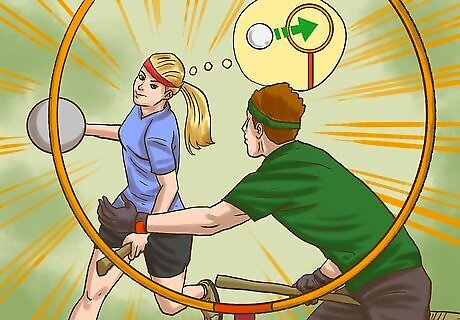
Try to score if you're a chaser. If you're a chaser, pursue the quaffle (volleyball) throughout the game. Move the quaffle across the court by throwing or kicking it and then toss or kick it through the other team's hoops. You can only toss the quaffle through the front of the hoops.
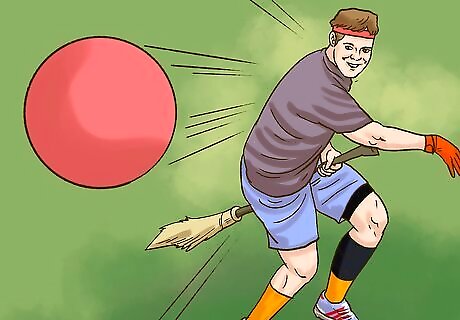
Disrupt the players if you're a beater. If you're a beater, your job is to toss bludgers (dodgeballs) at the other players. If a player is hit with a bludger (dodgeball), they'll be temporarily out of the game. Other beaters can be hit with bludgers by the opposing team. However, beaters cannot hit the player carrying the snitch with a bludger. In the event a bludger goes out of bounds, the ref can quickly retrieve it.
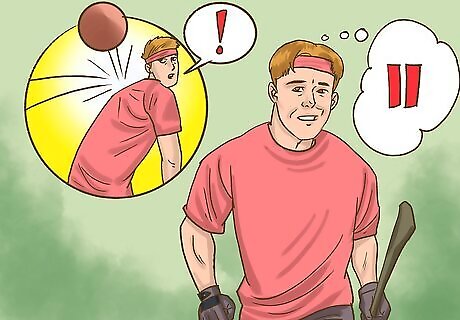
Stop playing temporarily if you're hit by a bludger. In the event you're hit by a bludger (dodgeball), let go of any balls you're holding. You also have to dismount your broom. You must tag one of the hoops on the court before you can get back on your broom and keep playing. All players, including beaters on the other teams, need to stop playing if they're hit by a bludger. The one exception is the person carrying the snitch, as they're not technically a player for either team.
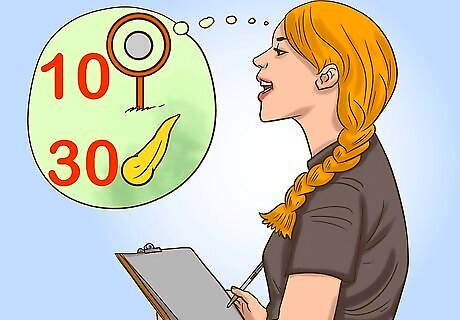
Have someone track the score. You or another player should keep track of the score. Each time a keeper gets the quaffle (volleyball) through the other team's net, they score 10 points for their team. The snitch, when caught, is worth 30 points.
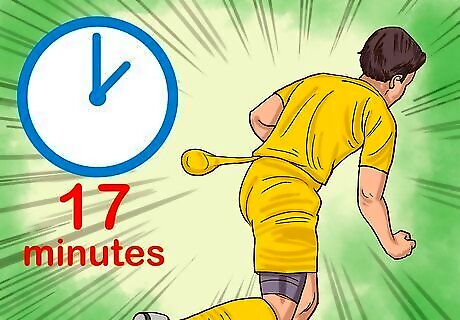
Release the snitch after 17 minutes. After 17 minutes of game play, the player carrying the snitch should be released onto the field. The carrier's job is to run around the field attempting to evade both seekers. The player carrying the snitch is not permitted to leave the field during the game, but needs to work hard to evade the seekers. This is why it's important to choose someone very agile to carry the snitch.
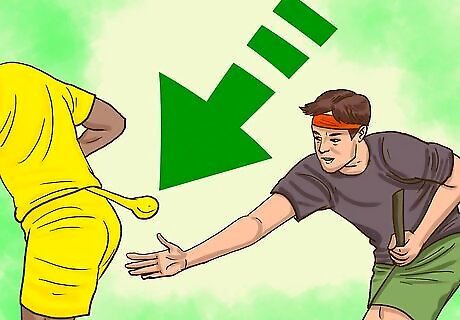
Pursue the snitch if you're the seeker. If you're the seeker, your job is to catch the snitch when it would help your team win. The game ends when the snitch is caught. Remember, the snitch is the ball attached to the carrier's waistband. You must grab ahold of the ball to catch the snitch.
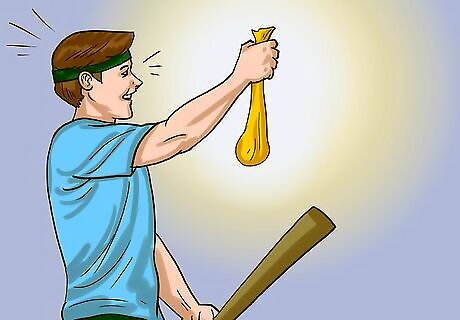
End the game when the snitch is caught. Under most circumstances, a game of Quidditch ends when the snitch is caught. Thirty points are assigned to the team who caught the snitch and the score is totaled.
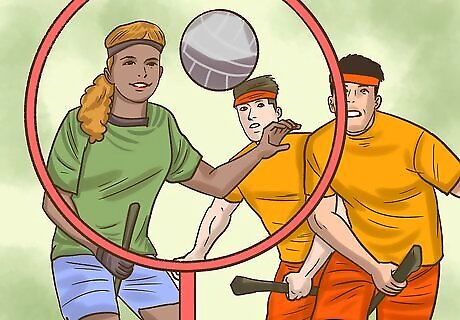
Continue the game to settle a tie. In rare occasions, the score will end up tied after the snitch is caught. If this is the case, simply keep playing. The next team to score 10 points using the quaffle will win the game.
Using Basic Strategy
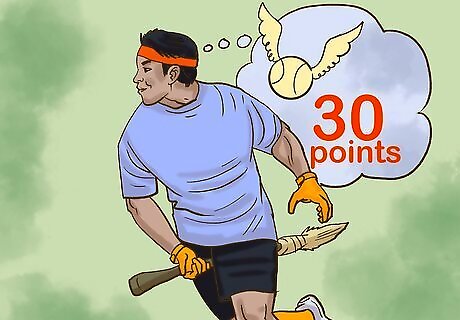
Stay aware of the score as a seeker. It doesn't make sense to catch the snitch until doing so would result in your team winning. Therefore, if you're the seeker keep an eye on the scoreboard. Don't pursue the snitch until catching it would ensure your team would take the lead.
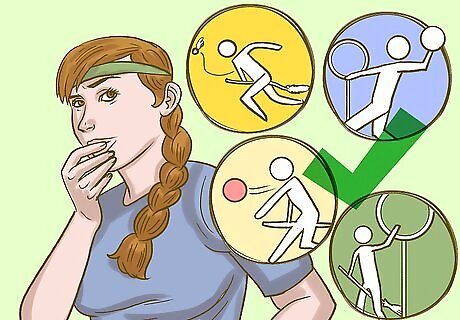
Assign roles based on ability. Different roles require different skill sets. If you're the captain, assign roles based on an individual player's specific skills. The seeker needs to pursue the snitch, so pick someone who's very fast. If someone runs track, for example, they could be the seeker. Players with experience playing basketball or volleyball may be good chasers, as it involves pursuing, kicking, throwing, and passing a ball. Anyone who's played dodgeball or a similar game would make a good beater, as they'd be able to hit players with bludgers. If anyone has experience as a goalie in a game like soccer or hockey, they would make a good keeper.
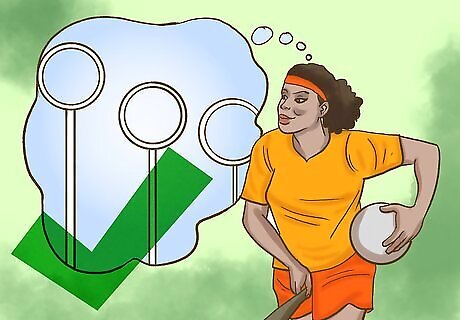
Don't get hung up on the different sized hoops if you're a chaser. While the hoops are different sizes, the sizes do not correlate to points. Any hoop is worth 10 points for your team. Therefore, don't worry so much about which hoop you throw the ball through. This will only distract you. Focus on getting a ball through any hoop that's accessible to you.
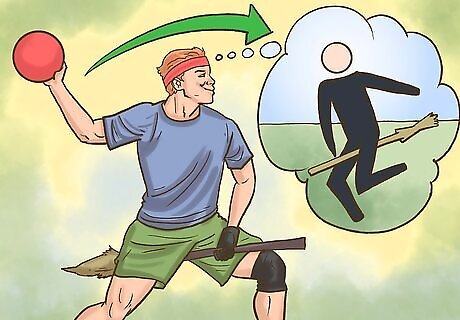
Target chasers in open areas if you're a beater. If you hit your own player with a bludger by mistake, this will hurt your team. It's easy to hit the wrong player if you're throwing a bludger in a crowded area of the field. Look for chasers in open areas, without a lot of other players nearby. These are the easiest targets to hit as a beater.

















Comments
0 comment